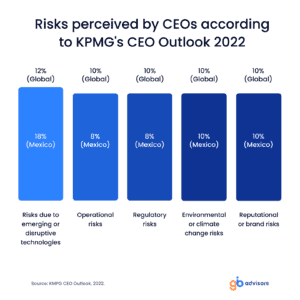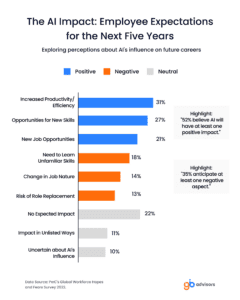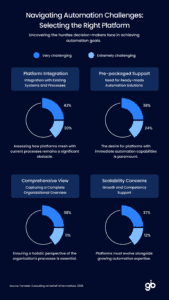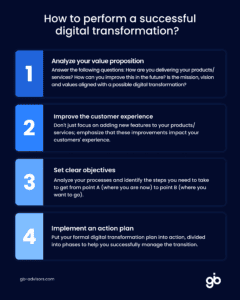There is a lot of talk about digital transformation in organizations today.
This term is widely used to refer to any digital initiative undertaken in a company. This is regardless of the possible magnitude of its scope.
This is usually an attractive term for companies seeking to reduce costs and increase the efficiency of their operations.
However, the truth is that there are several myths that confuse people about what it can do for their companies.
In this blog, we will tell you what digital transformation is (if you don’t already know). In addition, we will tell you about the main myths about digital transformation in organizations that you should know in order to have clear expectations.
What is digital transformation?
Digital transformation is the process of using digital technologies to create or modify existing business processes. The ultimate goal should be to drive customer experiences to meet changing market needs.
This process goes beyond simple digitization (the conversion of analog information into digital formats) and involves a fundamental change in how an organization delivers value to its customers.
In addressing digital transformation, companies must consider both technical and cultural aspects. This may involve restructuring teams, training employees in new skills, and creating a culture of innovation and adaptability.
Read more about the benefits of digital transformation in organizations here.
Let’s take a look at the main myths surrounding this process below:
4 Myths of digital transformation in organizations
1. Its only goal is to reduce costs and labor force.
One of the most talked-about myths of digital transformation in organizations is related to its goal.
There is much talk that you only digitally transform a company to:
- Reduce operating costs
- Substitute technology for human talent (this is becoming more popular with the irruption of generative AI in organizations).
How can we explain both misconceptions?
Yes, we can affirm that one of the main objectives of undertaking a technological initiative today is to reduce operating costs through resources such as automation, big data, etc.
However, this is not an objective per se. This could be considered as a consequence of digital transformation.
A good digital transformation must be accompanied by better processes. This must be complemented by better resource management and empowerment of the organization’s human talent.

With this, organizations will be able to more easily reduce costs derived from operational inefficiencies and will be able to ensure the success of the initiative.
Now, let’s focus on the second misconception about the objectives of a digital transformation (replacing human talent with technology).
As an example, we have an example in the incursion of generative AI in organizations.
Although one perspective on the matter proposes that generative AI is coming to companies to replace employees.
Companies that approach it this way would be making a blunder by foregoing the true value of human talent.
Human talent offers your company fresh, creative, and unique insights that are enhanced by AI-enabled elements.
Elements such as automation, content creation, and management, or the management and analysis of large amounts of data are part of the uses to AI.

Learn more about the benefits of Generativa AI for businesses here.
2. Only the big players are taking advantage of digital transformation
The acceleration of the adoption of new technologies and digital solutions in organizations is a direct consequence of the pandemic.
Now, is it true that only large companies can invest in digital transformation?
The element that explains this myth lies in the perception that digital transformation focuses solely on the capacity of the implemented technology.
This erroneous approach does not include an important factor: the maturity and efficiency of organizational processes.
Without this, any implemented technology will become obsolete for the organization. This, at the same time, represents a long-term economic and operational risk.
Why is this? Without a review and optimization of the processes that the technology is intended to enhance, the chances of failure of the initiative increase.
3. To digitally transform yourself is to get rid of everything you already have.
Although it may seem so, transforming digitally does not imply that we must get rid of what already exists.
It is not necessary to discard existing systems and processes within the organization for the simple fact of “modernizing” with more up-to-date technology.

The reality is that new technologies that complement digital transformation should not replace the systems you already have in place overnight.
It is a fact that legacy systems (Legacy Systems) may already feel obsolete. How can we detect this? When they make it difficult to see the data they handle. We can also consider the lack of updates that limit their ability to adjust to new needs.
However, just because they feel obsolete does not mean they need to be discarded abruptly.
Why? Adapting processes to these new systems and not making a complete transition risks the success of the initiative. In addition, it also puts business continuity at risk in the event that the systems are linked to vital business processes.
How can you mitigate these risks? Ideally, use these legacy systems and all their data and functionality to ease the transition; keep in mind that the transformation does not only include new technologies, but processes that complement them.
4. Only IT holds the key to digital transformation in organizations.
Yes, a digital transformation in principle is based on the application of new technologies to improve processes and areas of an organization.
However, is it only the responsibility of the IT area of the organizations?
In principle, it seems so. However, to achieve a successful digital transformation, it is necessary to go beyond technology. To be successful, the organization and the people who work in it must be able to make a difference.
Organizational culture dictates the success of these initiatives.
What must an organizational culture have in order to make the leap to digital transformation?
- An agile and innovative culture.
- Alignment between the different areas with respect to achieving business objectives.
- Mature and intuitive processes that successfully connect systems with people.
These are some keys to digital transformation to achieve the expected results.

Conclusion
Demystifying digital transformation in organizations is the first step. The goal should always be to approach it with a clear vision and a defined purpose.
Then, rather than seeing it as a series of technological and operational hurdles, organizations can embrace it as a unique opportunity to innovate. It helps grow and thrive in the modern business landscape.
It is essential that companies recognize that true transformation is a collaborative effort. Successfully achieving it requires the participation and commitment of all departments and levels.
Interested in taking that first step towards the digital transformation of your organization, contact us and find out how you can achieve it.



